The ADATA XPG Cybercore 1300W PSU Review: Advanced From the Start
by E. Fylladitakis on March 10, 2022 8:00 AM EST- Posted in
- Cases/Cooling/PSUs
- PSUs
- ADATA
- 80Plus Platinum
- XPG
- CWT
Hot Test Results (~45°C Ambient)
The XPG Cybercore is built from components that are capable of tolerating very high temperatures, which gave the PSU an edge while we were testing it inside our hotbox. The efficiency drop was very small, with a marginal average efficiency reduction of 0.4% across the nominal load range. In theory, the XPG Cybercore could receive its 80Plus Platinum certification even if the testing were to take place inside a hotbox. There is no disproportionate efficiency drop when the PSU is heavily loaded either, indicating that it is exceptionally resilient to thermal stressing.
No matter how efficient the XPG Cybercore is, that kind of power output will still produce a significant amount of thermal losses that the PSU will have to deal with. The temperature of the internal components will always be high if the PSU has to work under such adverse conditions, and higher than 60°C on the major active components across any load. Due to the cooling profile, the temperature of the internal components will be high while the unit is lightly loaded, will then drop when the load is moderate, and then keep rising until the unit reaches its maximum capacity. The temperature will reach a worrying level only when the XPG Cybercore is forced to operate at maximum load for prolonged periods of time.
The strange thermal behavior of the XPG Cybercore is due to the cooling fan or, to be more specific, the programmed cooling profile behind it. Regardless whether the unit was operating inside our hotbox or not, the thermal control circuit did not start the fan when the load was low. This was the culprit behind the high temperatures while the unit was only lightly loaded, which then dropped as the fan came on. The speed of the fan did not follow the same profile as when the unit was outside our hotbox though, as it reached its maximum speed with a load of 800 Watts and, naturally, maintained that high speed to the end of the load range.


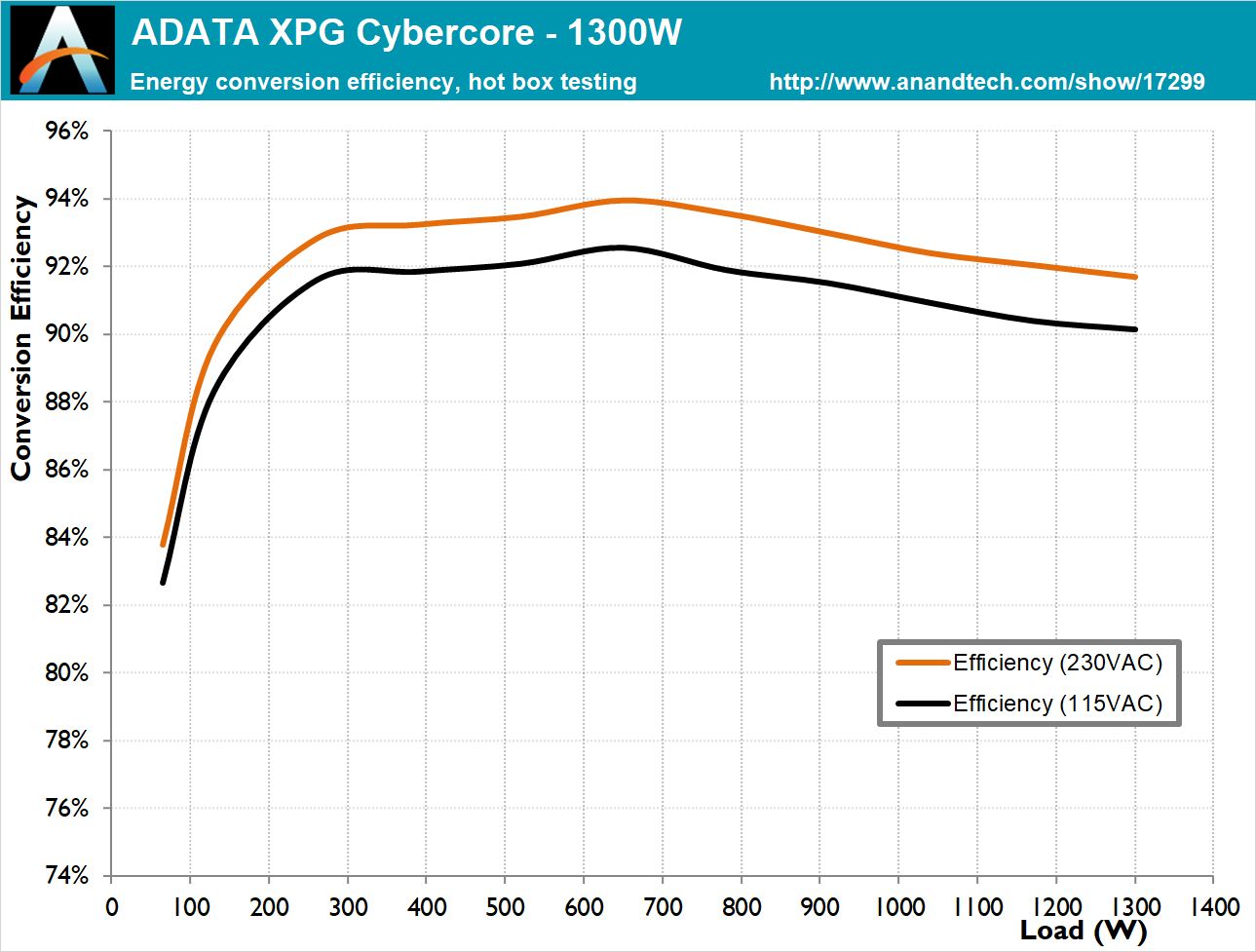
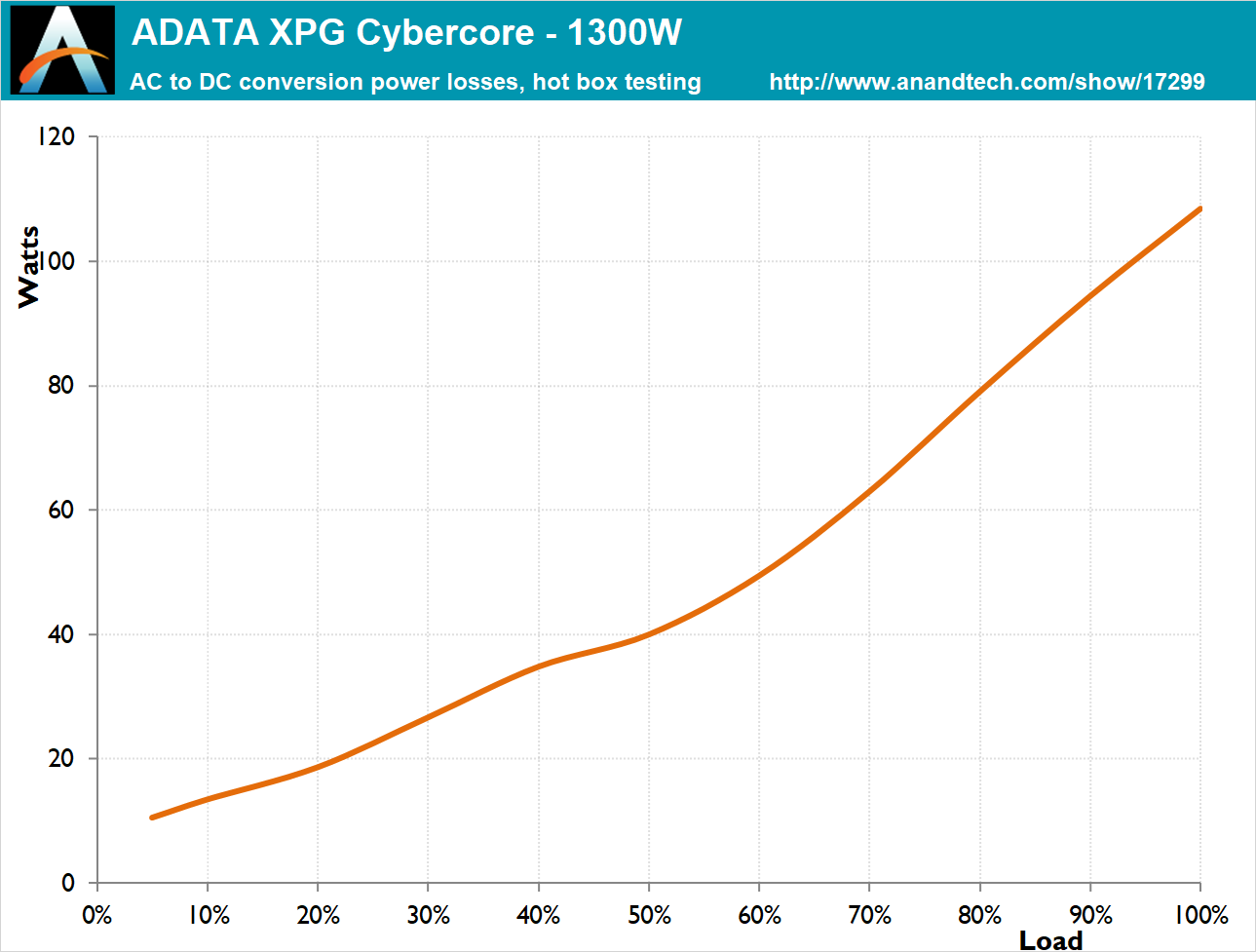
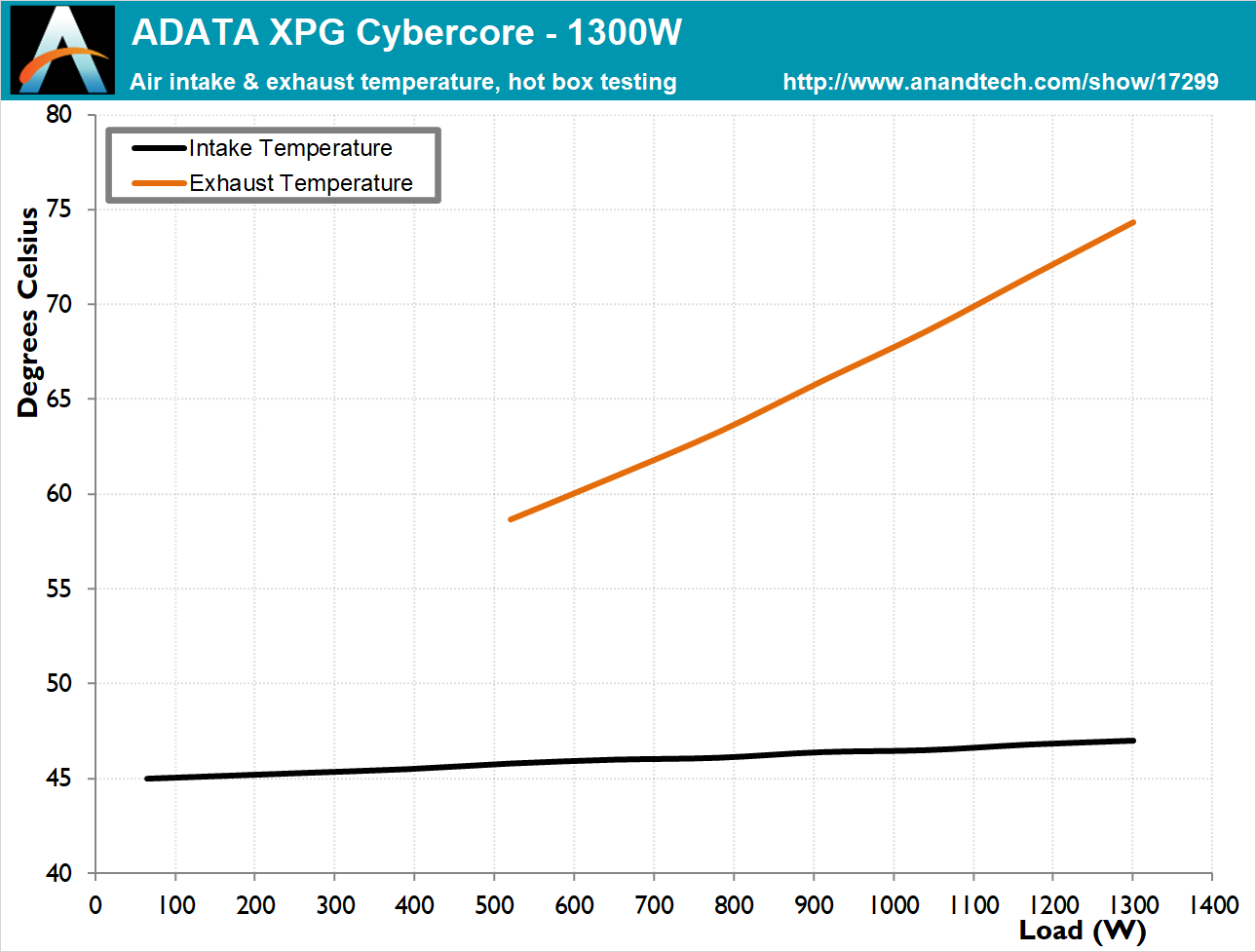
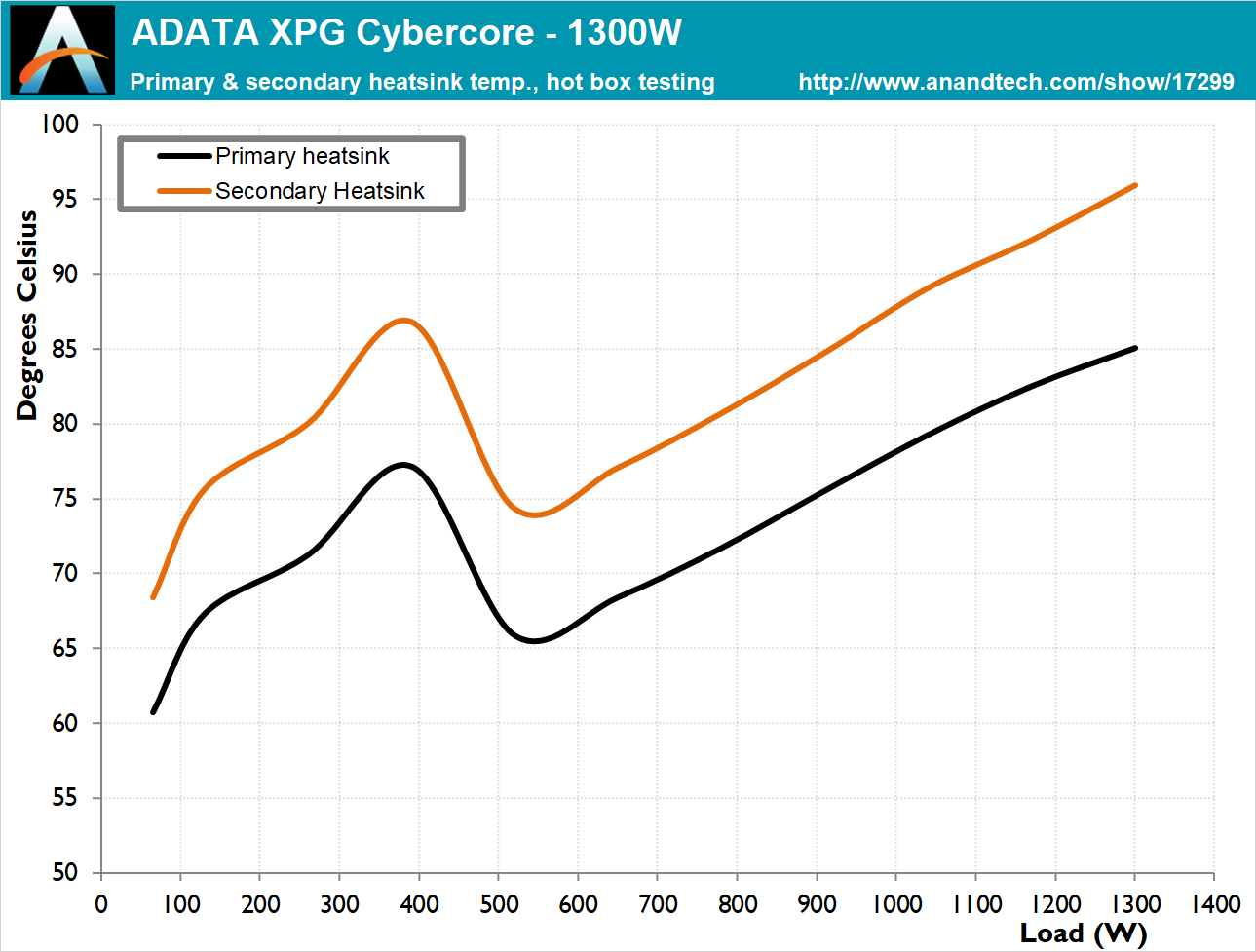
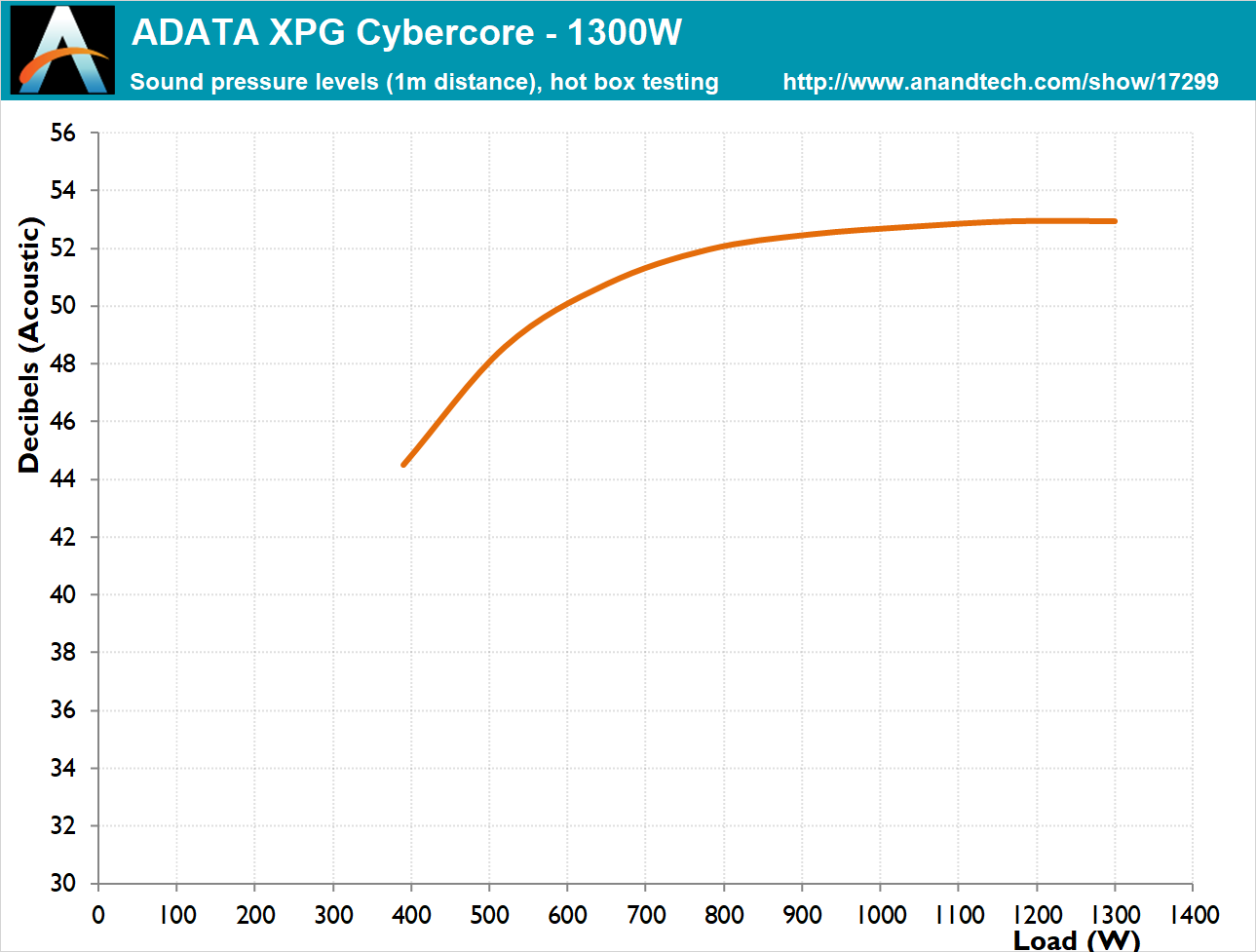








35 Comments
View All Comments
shabby - Friday, March 11, 2022 - link
Can those 2/3 slot heatsinks really dissipate that much heat?Wereweeb - Friday, March 11, 2022 - link
Water cooling will pretty much have to become the standard for flagship GPU's, even with GAA coming after 2025 (And might still take a while to reach consumer GPU's).at_clucks - Wednesday, March 16, 2022 - link
The General Appropriations Act? What does the Gaelic Athletic Association have to do with GPUs? The Georgia Alternate Assessment can't help at all here.But seriously, AMD was apparently eying Samsung's 3nm GAA for Zen5. Then again being Samsung I'm sure they probably squeeze less from GAA than TSMC is from FinFET. And I doubt that GPUs will see that anytime soon.
Einy0 - Friday, March 11, 2022 - link
If you crash from a 500 Watt transient spike and you have a normal desktop CPU with a 750 Watt or more power supply. You probably have a crappy or defective power supply.meacupla - Saturday, March 12, 2022 - link
or maybe, just maybe, nvidia is incapable of designing good power regulation circuitryinighthawki - Saturday, March 12, 2022 - link
I had a 750W PSU with a 3090 and a 5950 and it would regularly (once every few days) trigger the overcurrent protection and turn off. It was one of the best seasonic PSUs money can buy. I saw other instances of people with the same problem.The 3090 is known to hit transient spikes up to 600W, and when you couple in 100+W for the CPU, then MB, RAM, hard drives, etc. You can *trivially* go well beyond 750W.
Rοb - Sunday, March 13, 2022 - link
If you look at the efficiency ratings at 50% a Platinum will get you 92% and Titanium 94% at 50% load: https://en.wikipedia.org/wiki/80_PlusThe 2% difference translates into $2 per year for each hundred spent on electricity - so if you have a 10 year warranty (like on most Titanium rated supplies) you can probably afford to pay an extra $40 to move up a grade, and to overprovision a couple of hundred watts. It's likely that $40 won't quite cover the difference between the two power supplies but the doubling of warranty and lack of need to upgrade in the future can be worth the extra cost.
You could also just buy your power supply from the well known company that supplies components to most of the OEMs, certain models are priced very much lower than other brands; just a matter of taking the time to compare.
Byte - Sunday, March 13, 2022 - link
People also cannot imaging needing something like a 3090 that is $1500 retail. But we have it. And they sell like hotcakes. They have some crazy transient loads and 4090 might turn into an insane doozy with DOUBLE the Cudas!!!Oxford Guy - Sunday, March 13, 2022 - link
When will we stop seeing irrational designs like this PSU?The reviewer heaps praise upon a design that is suitable only if one cannot hear. Stuffing so many watts into a small box is foolish. Reliability is meaningless if you get tinnitus and noise pollution.
DanNeely - Monday, March 14, 2022 - link
Probably not until the first GPUs start shipping with them.